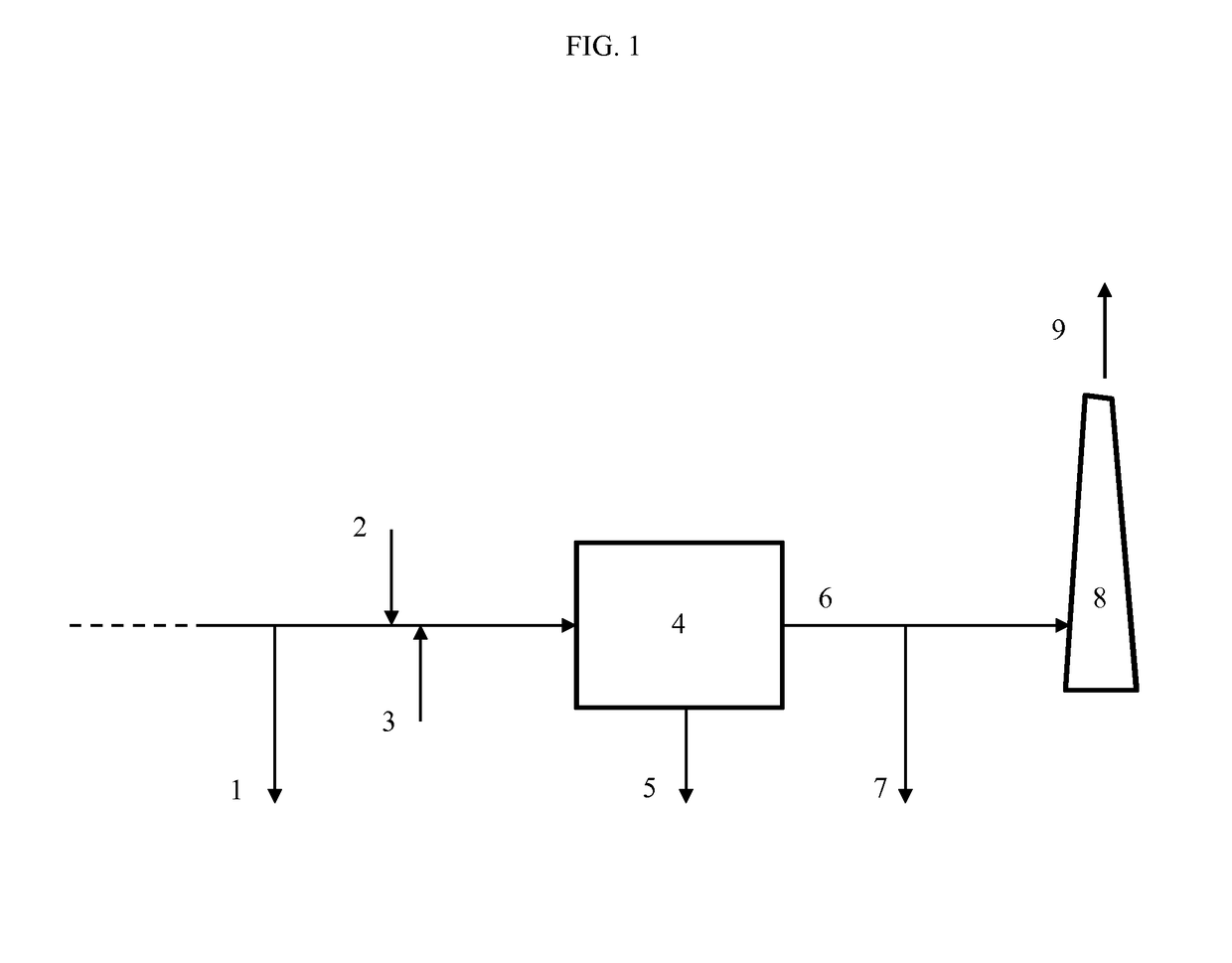Process for treating a gas contaminated by metals or organics compounds using a calcium-phosphate reactant comprising apatite
a technology of heavy metals or organic compounds, applied in the direction of filtration separation, other chemical processes, separation processes, etc., can solve the problems of insufficient technology, pollution of the subsoil, and high cost of control, so as to reduce the risks of flamable and fine reactants, the effect of improving flowability and dispersion ability and effective synergy
- Summary
- Abstract
- Description
- Claims
- Application Information
AI Technical Summary
Benefits of technology
Problems solved by technology
Method used
Image
Examples
example 1
[0202]In this example a calcium phosphate (Ca / P) reactant made according the example 8 (condition according example 1.b) of WO2015 / 173437 patent application, comprising 5% water, and the remaining comprising mainly hydroxyapatite Ca5(PO4)3(OH), was tested in Lab and then in a Mini-pilot installation using part of an industrial gas stream from a crematorium.
1.a Preliminary Lab Tests
Conditions:
[0203]generation of a contaminated gas with air[0204]contaminants tested: Cd, Pb, Zn (introduced as chloride salt)[0205]in oven at temperature of 600 to 700° C.[0206]with an air flow at 150 NL / h
[0207]All the 3 contaminants (Cd2+, Pb2+ and Zn2+) were positively trapped in one pass and show excellent adsorption capacity (see table 1) when gas stream was in contact with the calcium-phosphate reactant.
TABLE 1Adsorption capacity of apatite based calcium-phosphate reactant.Decision to test the Ca / P reactant in industrial gas stream.Adsorption Capacityin Lab experiment of theMetalcalcium-phosphate reac...
PUM
| Property | Measurement | Unit |
|---|---|---|
| temperature | aaaaa | aaaaa |
| temperature | aaaaa | aaaaa |
| weight ratio | aaaaa | aaaaa |
Abstract
Description
Claims
Application Information
 Login to View More
Login to View More - R&D
- Intellectual Property
- Life Sciences
- Materials
- Tech Scout
- Unparalleled Data Quality
- Higher Quality Content
- 60% Fewer Hallucinations
Browse by: Latest US Patents, China's latest patents, Technical Efficacy Thesaurus, Application Domain, Technology Topic, Popular Technical Reports.
© 2025 PatSnap. All rights reserved.Legal|Privacy policy|Modern Slavery Act Transparency Statement|Sitemap|About US| Contact US: help@patsnap.com

